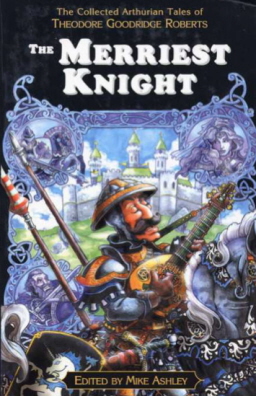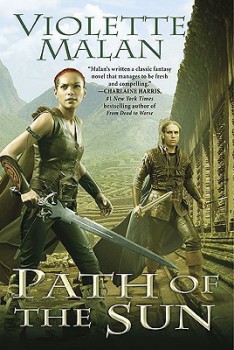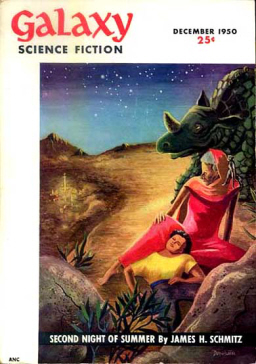New Treasures: The Merriest Knight, The Collected Arthurian Tales of Theodore Goodridge Roberts
 Yesterday, I spent the day at the Spring Auction at Games Plus, which I’ve taken to calling the Paris Fashion Week of Games. It was a very successful outing — so successful that I knew I had some explaining to do to Alice, who balances the family finances.
Yesterday, I spent the day at the Spring Auction at Games Plus, which I’ve taken to calling the Paris Fashion Week of Games. It was a very successful outing — so successful that I knew I had some explaining to do to Alice, who balances the family finances.
While I was waiting to settle up with the cashier, my eyes fell on a curious artifact in the tiny books section at Games Plus: The Merriest Knight, The Collected Arthurian Tales of Theodore Goodridge Roberts. Roberts was a Canadian pulp author whose tales of Sir Dinadan, whom Mallory called “the merriest knight,” appeared in the pulp magazine Blue Book in the 50s. Sir Dinadan was known as the most practical of the Knights of the Round Table, and Roberts’s stories differed from many of the Arthurian tales of the era in their warmth and wit.
Late in his career, Roberts wrote a final entry in the Dinadan saga, “Quest’s End,” which remained unpublished in his lifetime. Rumor had it he’d also begun collecting all the tales with an eye towards publishing a book, but the project remained unfinished when he died.
Now the peerless Mike Ashley, who’s edited countless anthologies — including 32 books in The Mammoth Book Of... series, and five other Arthurian Anthologies, such as The Pendragon Chronicles and Chronicles of the Holy Grail — has finished what Roberts began with The Merriest Knight, a beautiful collection of the complete tales of Sir Dinadan:
Under the guidance of editor Mike Ashley, The Merriest Knight gathers for the first time all of Roberts’ tales of Sir Dinadan — including the previously unpublished “Quest’s End” — and several other long lost Arthurian works by this master of the stylish adventure yarn and the historical romance. Within these pages, readers will find a collection of Arthurian tales that are sometimes poignant, often humorous, and always ingenious, as well as a Camelot made fresh by the wry and often scathing eye of Sir Dinadan, who never rushes into battle without first being certain of the need to fight at all.
Why is The Merriest Knight for sale in a games store? Ah, that’s an entirely different tale.








 When I was my students’ age, the SAT had two sections, not three. The verbal section was heavy on analogies, which the College Board has long since purged from the test. They added an essay in 2005, which to me feels like last week, but to my students, that’s a time when their ages were in single digits.
When I was my students’ age, the SAT had two sections, not three. The verbal section was heavy on analogies, which the College Board has long since purged from the test. They added an essay in 2005, which to me feels like last week, but to my students, that’s a time when their ages were in single digits.
